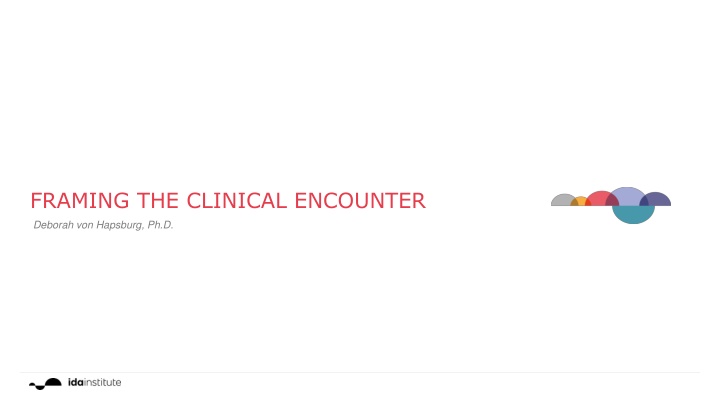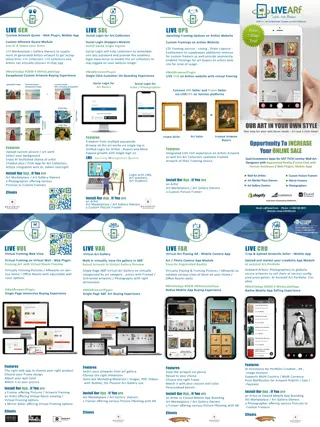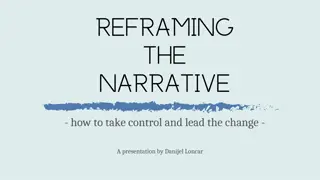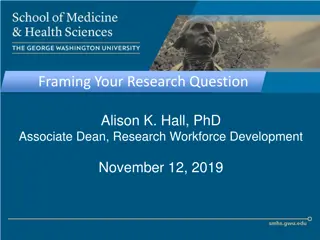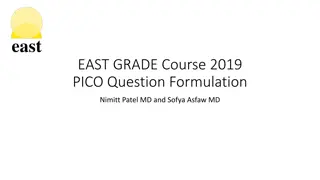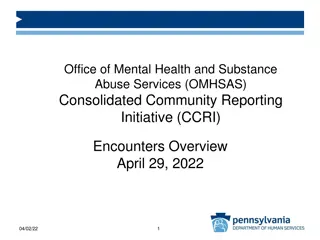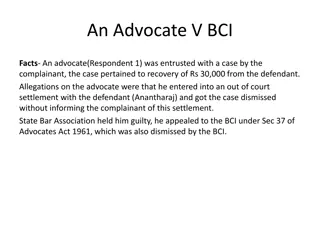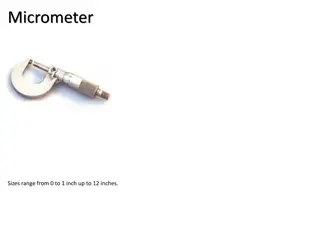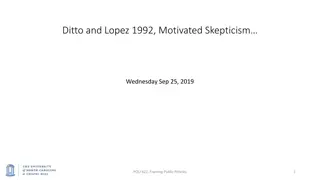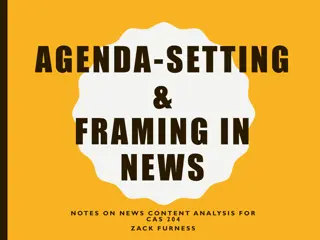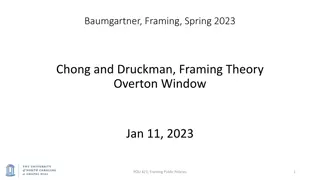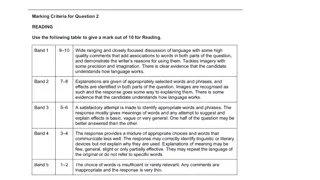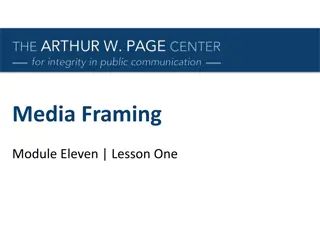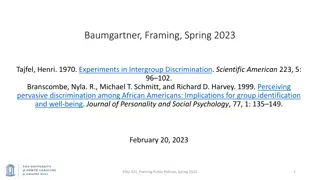FRAMING THE CLINICAL ENCOUNTER
In this insightful presentation by Deborah von Hapsburg, Ph.D., the clinical encounter model is explored to reveal the varying perspectives of clinicians and clients on defining hearing loss. The discussion delves into the profound impact of these mismatched viewpoints on patient outcomes, emphasizing the importance of a relationship-centered approach in healthcare. Through examining the concepts of illness and disease, the audience gains a deeper understanding of how social, psychological, and spiritual dimensions intertwine with the physical aspects of health. The presentation also introduces a tool to visualize the patient journey, fostering a comprehensive view of individuals' unique trajectories through the healthcare system.
Uploaded on Mar 05, 2025 | 0 Views
Download Presentation

Please find below an Image/Link to download the presentation.
The content on the website is provided AS IS for your information and personal use only. It may not be sold, licensed, or shared on other websites without obtaining consent from the author.If you encounter any issues during the download, it is possible that the publisher has removed the file from their server.
You are allowed to download the files provided on this website for personal or commercial use, subject to the condition that they are used lawfully. All files are the property of their respective owners.
The content on the website is provided AS IS for your information and personal use only. It may not be sold, licensed, or shared on other websites without obtaining consent from the author.
E N D
Presentation Transcript
FRAMING THE CLINICAL ENCOUNTER Deborah von Hapsburg, Ph.D.
GOALS Goal 1: To introduce the clinical encounter model. Goal 2: To examine the process by which hearing loss is defined by clinicians and clients. Goal 3: To explore how the mismatch in perspectives can affect outcomes. Goal 4: To develop a bird s-eye view of the patient journey in order to deepen our understanding of each individual client s trajectory. Goal 5: To Introduce the A possible Patient Journey tool. Slide 2 5.3.2025
LEARNING OBJECTIVES Students will be able to show understanding of explanatory models for defining hearing loss. Students will be aware that clinicians and patients have different perspectives when it comes to defining hearing loss. Students will be able to distinguish between illness and disease and how these points of view differ. The idea of discovering the mismatch in perceptions will be introduced. The idea of relationship centered care will also be introduced. Slide 3 5.3.2025
MISMATCH IN PERSPECTIVES = 2 DEFINITIONS OF HEARING LOSS Illness How the client and the members of the family or social network perceive and respond to symptoms and disability The difficulties and distress illness creates in real life The experience and meaning of symptoms and suffering (fear, shame, life disruption, social exclusion) The person s own categorizing, explaining, and ideas of how to cope best Disease Problem seen from practitioner s perspective Malfunctioning of biological and/or psychological processes What the practitioner creates in the recasting of illness in terms of medical theories of disorder What the practitioners have been trained to see through the theoretical lenses of their particular form of practice An interpretation of health problems within a particular nomenclature and taxonomy Slide 5 5.3.2025
Disease and illness are never just physical. They are also and always social, psychic and spiritual, and utterly human (von Engelhardt, 2004) Slide 6 5.3.2025
ESTABLISH THE PATIENT JOURNEY Pre-Hearing Loss Diagnosis Post-Diagnosis Pre-Diagnosis time Now what? What am I experiencing? How is the loss affecting me What was life like? Am I ready to accept change? Are recommendations consistent with my life demands? How do I cope? What /how do I experience? What is my self-concept? How do I cope? What do I experience? What is my self - concept? What are my stressors?
ESTABLISH THE PATIENT JOURNEY Maintenance Relapse/Exit Action Pre-Diagnosis time Rehabilitation Rehabilitation Referral Pre- contempla tion Action treatment Action, treatment Testing Recommenda- tions Contempla tion Acceptance, rejection Acceptance, rejection Decision making Preparation Post-clinical life
ESTABLISHING THE PATIENT JOURNEY Understanding of the patient journey will underlie the need to treat patients, rather than diseases, and to understand the impact such journeys may also have on patients careers and families. Tell doctors what really matters to patients and what help they need to make the most of their lives. (Lapsley, & Groves, 2004) Slide 11 5.3.2025
CLASS ACTIVITY 2: CREATE A PATIENT JOURNEY 1. Select a partner 2. Discuss how this patient s journey has evolved from pre- contemplation to Preparation and Exit. 3. For each phase of the Journey use information from the video re- enactment to create the Possible Journey, using your imagination for how he must have experienced the Journey, in sections for which there is no video evidence. 4. Compare and Discuss the different Possible Journeys created. Slide 14 5.3.2025
REFLECTION MOMENT How has this exercise affected how you approach a clinical encounter? Slide 16 5.3.2025
REFERENCES Charron, R. (2006). Narrative Medicine: Honoring the stories of illness. Oxford: Oxford University Press. Kaptein, A. &. Lyons, A.C. (2009). The doctor, the breath, and Thomas Bernhard: Using novels in health psychology. J Health Psychology, 14, 161-170. Lapsley, P. & Groves, T. (2004). The patient s journey: travelling through life with a chronic illness. British Journal of Medicine, 329, 582-583. Tjornhoj-Thomsen, Tine (2009). Framing the clinical encounter for greater understanding, empathy, and success. The Hearing Journal, 62(8), 38-41. Von Engelhardt, D. (2004). Patient vs. disease in medicine: Historical perspectives and contemporary concerns. Journal of Nephrology, 17(4), 611 618. Wear, D. (2000). Toward qualitative understandings of health phenomena or a pedagogical epiphany from a long-time medical humanities professor who thought she was on the right track. Qualitative Health Research, 10(2), 277 283. Slide 17 5.3.2025
